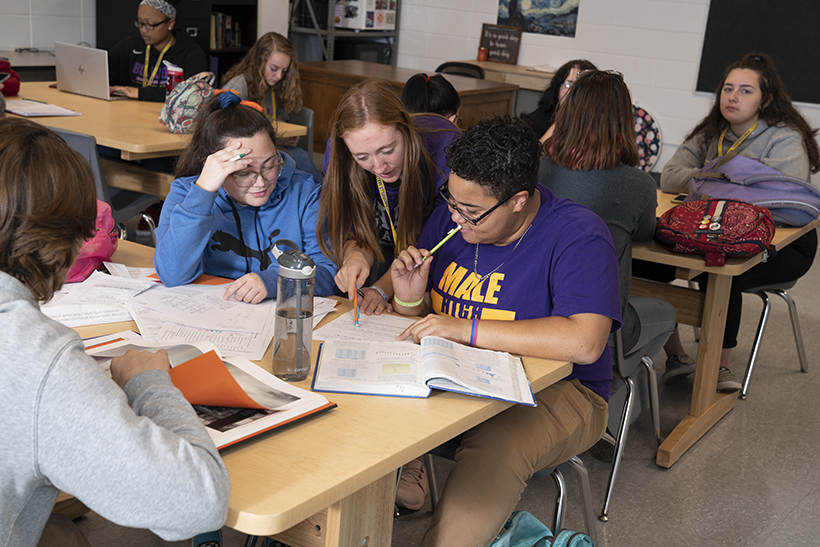This post is an excerpt from the English Journal article “Using Writing to Explore Social Class” by NCTE member Katelynn DeLuca.
Social class does not cease to exist when teachers don’t discuss it. Instead, we may be hiding from our students the existence of social inequality and possibly perpetuating the myth that individuals are solely responsible for their success or lack of success. Failing to teach students about class can cause them to blame themselves and their families for perceived shortcomings within their lives: Why can’t I live in a bigger house? Why do I have to take public transportation? Why can’t my parents afford the latest technology or clothing?
Ignoring class also prevents wealthy students from learning more about the world around them and how their experiences differ from others’. As educators, it is our responsibility to help students learn what social class is and how it operates. Our students deserve to be better equipped to examine social class, which will help them succeed wherever they go in the future.
However, exploring social class can be an emotional, even traumatic, experience for students from all class backgrounds, especially as it means examining privilege and oppression. In “Examples of Trauma-Informed Teaching and Learning in College Classrooms,” Janice Carello identifies social justice as a critical element of trauma-informed pedagogy, noting that it’s important that “all members strive to be aware of and responsive to forms of privilege and oppression and to respect one another’s diverse experience and identities.”
Exploring social class with students gives them a crucial opportunity to develop awareness and responsiveness to forms of privilege—whether or not they personally enjoy them—which further demonstrates the need for critical attention to class. Although investigating class with students can feel intimidating, there are changes, large and small, that teachers can make that allow us to do this work. And, to make these changes effective while engaging with a potentially traumatic topic, teachers must make significant investments in their own learning and planning.
In her article “Keeping Up with . . . Trauma- Informed Pedagogy,” Desirae Zingarelli-Sweet offers a trauma-informed teaching strategy that encourages teachers to invite but “not require students to share how they are feeling at key junctures” to prioritize learning and student safety. Furthermore, two ways to “effectively facilitate discussion containing potentially triggering topics” are “think[ing] through your lesson plan and anticipat[ing] as many outcomes as you can” and “com[ing] to class knowledgeable about the topic” (“Trauma-Informed Pedagogy”).
Just as we ask students to prepare for each day, we must do the same. I offer here a series of activities and assignments modeled on activities I have used in my classes. The progression of each writing assignment allows students to look inward and then take steps to complicate their perceptions looking outward.
Find DeLuca’s activities and assignments in her full English Journal article here.
 Katelynn DeLuca is an assistant professor of English and composition at Farmingdale State College (SUNY). Her work focuses on the intersections of social class, identity, and the writing classroom. Katelynn has been a member of NCTE since 2015 and can be contacted at Katelynn.deluca@gmail.com.
Katelynn DeLuca is an assistant professor of English and composition at Farmingdale State College (SUNY). Her work focuses on the intersections of social class, identity, and the writing classroom. Katelynn has been a member of NCTE since 2015 and can be contacted at Katelynn.deluca@gmail.com.
It is the policy of NCTE in all publications, including the Literacy & NCTE blog, to provide a forum for the open discussion of ideas concerning the content and the teaching of English and the language arts. Publicity accorded to any particular point of view does not imply endorsement by the Executive Committee, the Board of Directors, the staff, or the membership at large, except in announcements of policy, where such endorsement is clearly specified.

